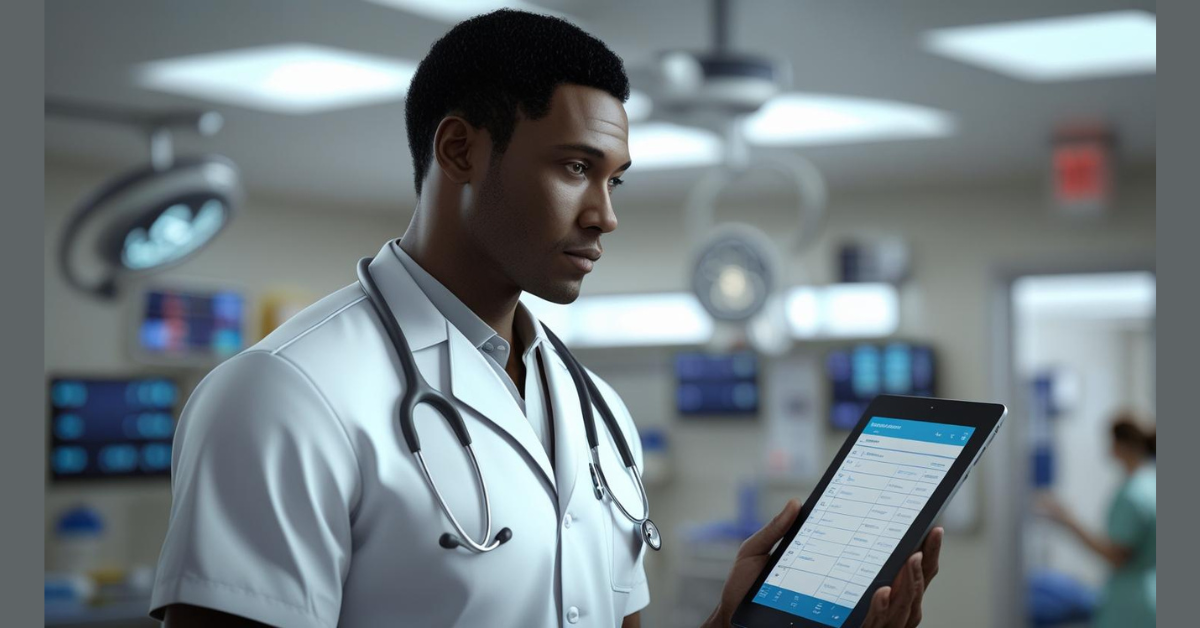The Triage Nurse First Line of Clinical Decision-Making in Emergency and Telehealth Settings. Triage nurses are the first point of contact for patients in the emergency department and telemedicine settings, and they play a critical role in decision-making. They assess patients’ condition to determine urgency and priority of care, ensuring timely and appropriate treatment. They evaluate symptoms, vital signs, and medical history to classify patients according to severity. Standardized triage systems, such as the Emergency Severity Index (ESI), are frequently used.
Triage Nurse First Line of Clinical Decision-Making in Emergency and Telehealth Settings
Triage medical attendants stand at the basic crossing point of healthcare conveyance, serving as the primary line of clinical decision-making in both conventional crisis divisions and quickly growing telehealth situations. Their ability in quick appraisal and clinical judgment straightforwardly impacts persistent results and healthcare framework productivity.
The Evolution of Triage Nursing
Triage begins from the French word “trier,” which is utilized to depict the forms of sorting and organization. Whereas generally established in military pharmaceutical, present day triage nursing has advanced into an advanced clinical strength that presently includes both in-person crisis care and farther telehealth administrations.
Emergency Department Triage: Structured Clinical Decision-Making
Emergency Severity
Index is a 5-tier triage tool that assigns patients to emergency departments according to the triage level. The tool helps to decide which patients’ needs should be met first, thus efficiently and timely addressing those with life-threatening conditions. The ESI approach to triage simply considers the acuity of the patient’s medical condition at the emergency department and the expected number of resources that will be necessary for their care.
Resource-Based Evaluation:
Resource allocation examples in the ESI triage process can include laboratory examinations, electrocardiography, radiology, parenteral or nebulizer drug application, consultation, minor surgical operations (laceration repair), or a major surgery. Such an orderly system assists a nurse to judge correctly where to start and how to base the criticality and requirement criteria.
Clinical Aid:
The mechanism that enables categorization of patients into five categories according to the patient’s needs and acuity level using a focused triage assessment provided the complex healthcare provider is a nurse. This method of approach ensures that decision-making based on the evidence remains fair and results are similar if such a system is used on various nurses, and the shifts are adequately planned.
Telehealth Triage: Expanding Clinical Reach
Inaccessible Evaluation Capabilities:
Tele-triage is like conventional triage but employments innovation to supplement or supplant components of the persistent interaction. Tele-triage includes screening patients remotely to decide the patient’s condition and the care required. This technology-enabled approach has gotten to be progressively crucial in healthcare conveyance.
Phone Triage Fabulousness:
Amid their discussions with patients, phone triage medical caretakers assess the patient’s side effects and therapeutic history. The phone triage nurture at that point offers treatment counsel or coordinates the persistent to healthcare administrations. Inquire about illustrates that phone triage medical attendants, employing a computerized decision support framework, had a better rate of quality and security compared to calls triaged by common specialists.
Security and Quality Contemplations:
Farther experiences approximately intense, troubling side effects are time touchy, requiring decision-making beneath conditions of instability and criticalness. Persistent security and secure proficient hone are amazingly imperative within the field of teletriage, which contains a tall potential for blunder.
Technology Integration and Clinical Decision Support
Artificial Intelligence (AI) Empowerment:
To a large extent in the future, the ED triage clinical outcomes will be the result of an increasing dependence on AI and ML algorithms. Some of these latest developments encompassed decision support systems which have become so advanced that they are assisting nursing judgment while the human element of care is not overlooked.
Advanced Tools and Triage:
In the year 2024, via phenomenal telehealth triage, [Nurse Triage On Call, Med Message Automate™] and remote patient monitoring, vast leaps have been made to accomplish the goal of these items more effectively and with more clinical accuracy.
Protocols That Are Standardized:
The nurse triage guidelines provided by Schmitt-Thompson Clinical Content are of top quality and they come to the addition of nurses in their capacity to deliver healthcare advice. It is trough standard protocols that are able to accomplish the uniformity and high level of quality in all the different health care facilities.
Clinical Excellence in Both Settings
Crisis Office Optimization:
Crisis division packing can be made strides by upstream phone triage. This illustrates how telehealth triage can bolster conventional crisis care by coordinating suitable patients to appropriate care levels.
Comprehensive Care Coordination:
Present day triage medical caretakers must exceed expectations in both face-to-face evaluation and inaccessible assessment, adjusting their clinical abilities to distinctive innovative stages whereas keeping up the same tall benchmarks of quiet care and security.
The Future of Triage Nursing
The part of triage medical care takers proceeds to extend as healthcare frameworks coordinated more modern innovation and inaccessible care capabilities. Victory in this advancing field requires not as it were conventional clinical abilities but moreover innovative education, improved communication capacities for farther intuitive, and the adaptability to adjust evidence-based conventions over numerous care conveyance models.
Triage medical caretakers stay the basic to begin with line of clinical decision-making, whether welcoming patients in individual at the crisis office or interfacing with them through telehealth stages. Their mastery in fast appraisal, clinical judgment, and care coordination makes them crucial in advanced healthcare conveyance frameworks that progressively depend on both conventional and inventive approaches to persistent care.
Read More:
https://nurseseducator.com/didactic-and-dialectic-teaching-rationale-for-team-based-learning/
https://nurseseducator.com/high-fidelity-simulation-use-in-nursing-education/
First NCLEX Exam Center In Pakistan From Lahore (Mall of Lahore) to the Global Nursing
Categories of Journals: W, X, Y and Z Category Journal In Nursing Education
AI in Healthcare Content Creation: A Double-Edged Sword and Scary
Social Links:
https://www.facebook.com/nurseseducator/
https://www.instagram.com/nurseseducator/
https://www.pinterest.com/NursesEducator/
https://www.linkedin.com/in/nurseseducator/
https://www.researchgate.net/profile/Afza-Lal-Din
https://scholar.google.com/citations?hl=en&user=F0XY9vQAAAAJ



Undeniably believe that which you stated. Your favorite reason appeared to be on the net the simplest thing to be aware of. I say to you, I definitely get irked while people think about worries that they plainly do not know about. You managed to hit the nail upon the top as well as defined out the whole thing without having side effect , people can take a signal. Will probably be back to get more. Thanks